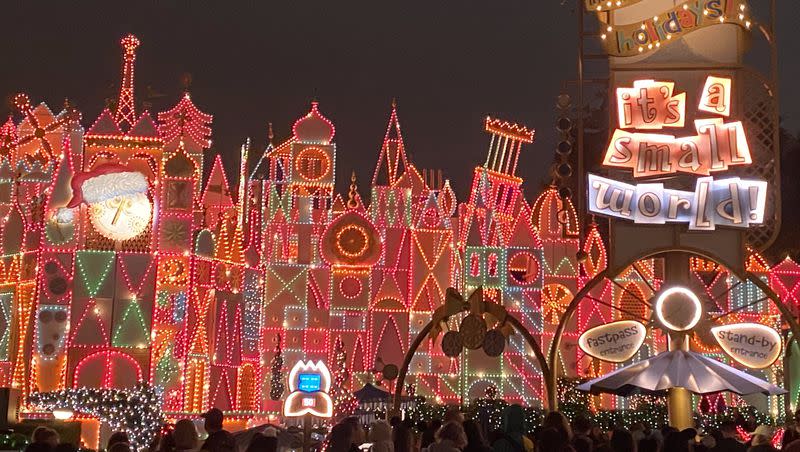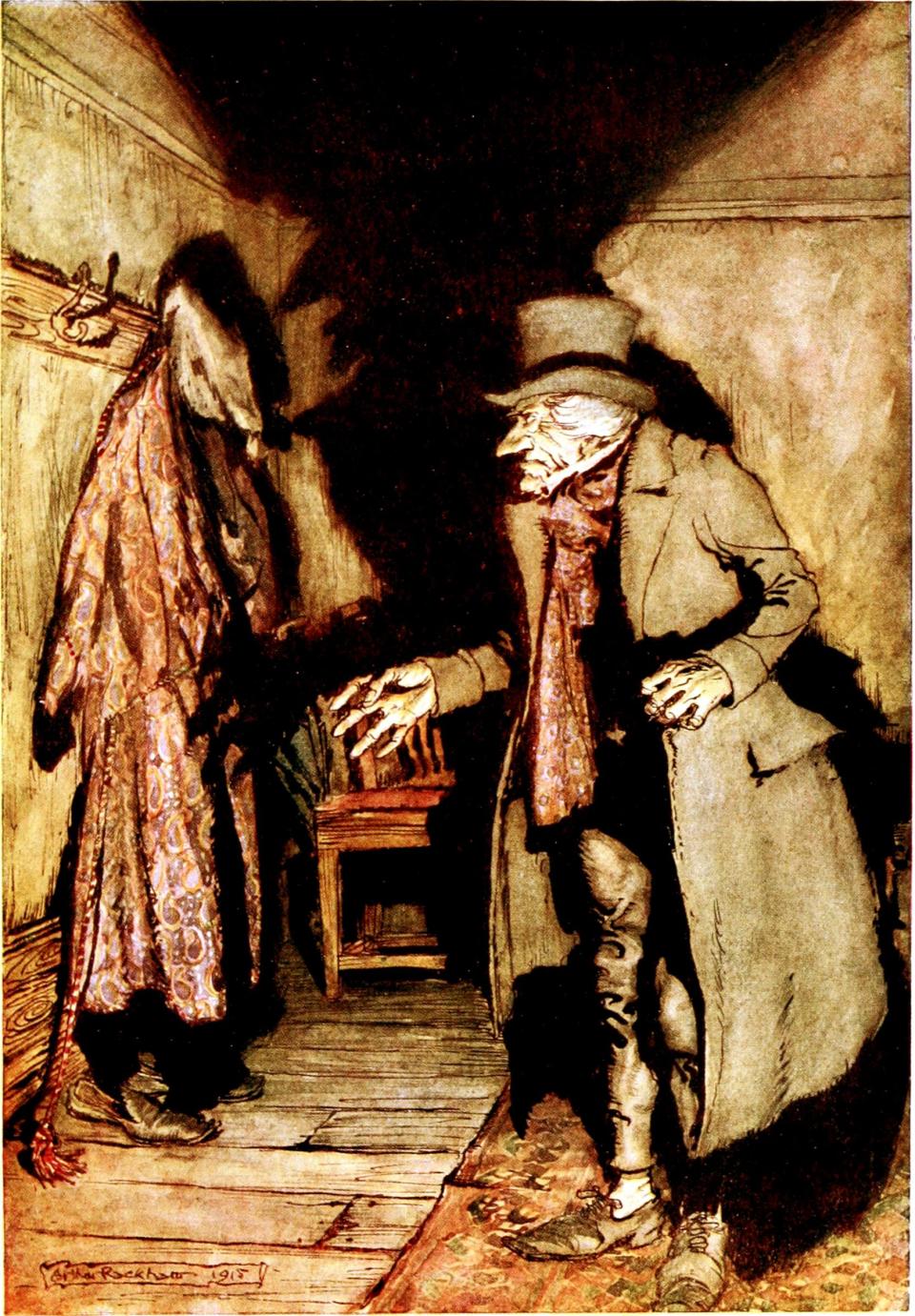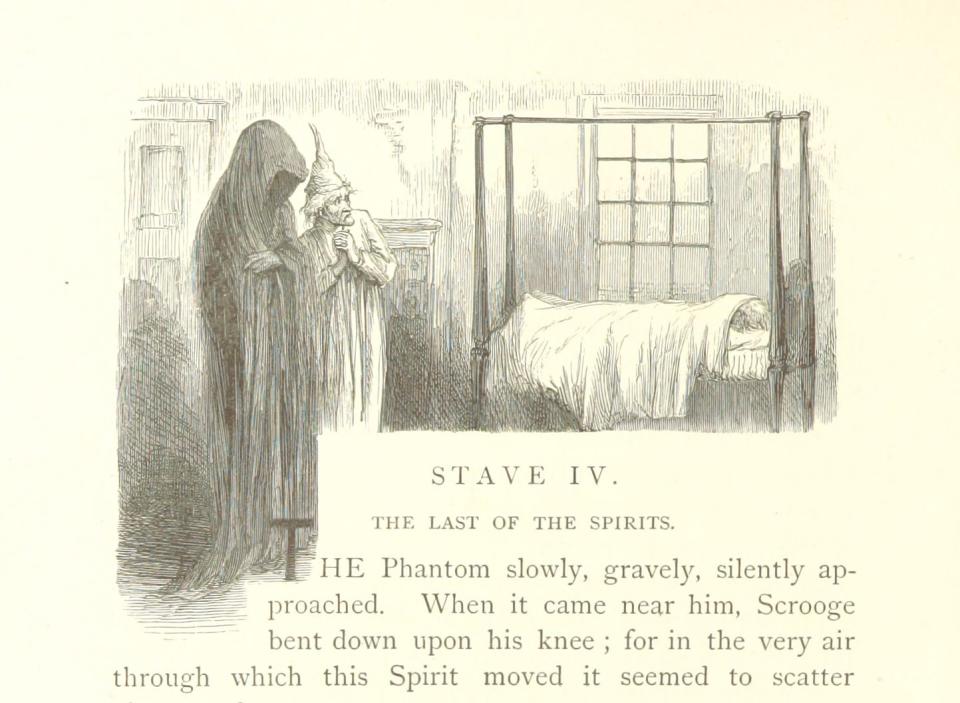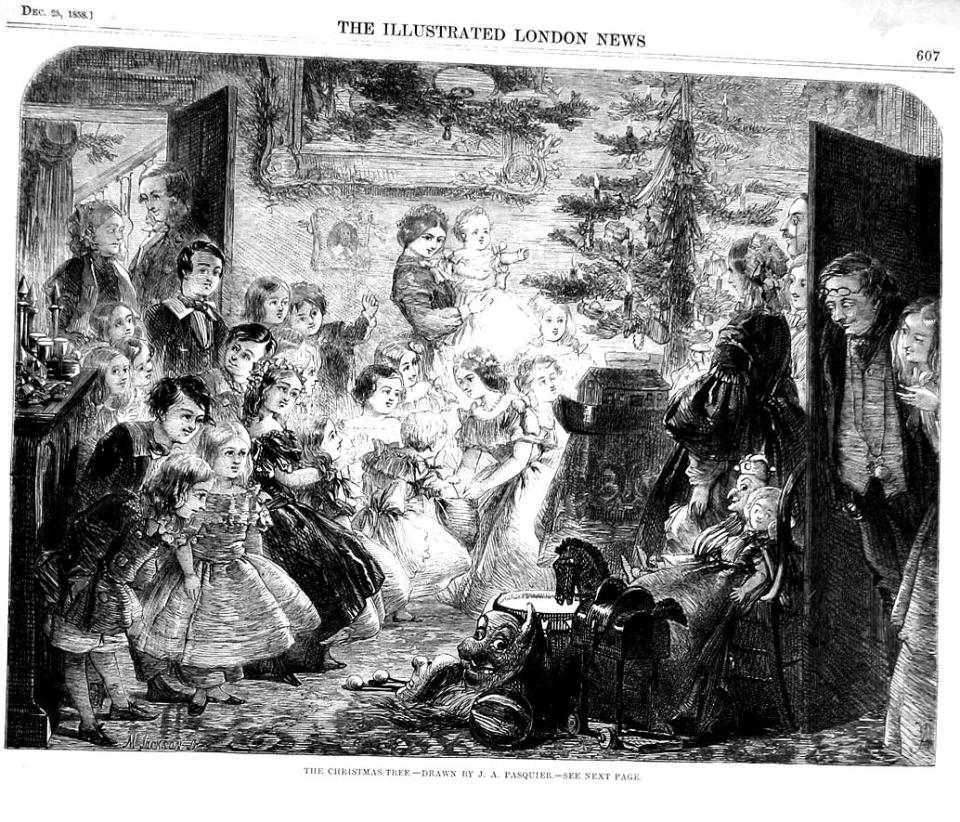How Charles Dickens stole Christmas

- Oops!Something went wrong.Please try again later.
Even though folk-literature holds that the Grinch stole Christmas, it might have actually been Charles Dickens.
Well, it’s not that Dickens stole Christmas, but he contributed to how we celebrate it today.
In 1903, F. G. Kitton called Dickens “the man who invented Christmas.” Kitton referred to how Dickens single-handedly put stockings back on the fireplace and the Christmas spirit back into people’s hearts with one novella.
While Dickens didn’t invent Christmas, he did reimagine the Christmas spirit.
Related
Dickens’ famous “A Christmas Carol” was a rush job. According to Paulette Beete, he wrote the novella in the span of six weeks due to financial pressure. But it was a smashing success.
Published on Dec. 19, 1843, by Christmas Eve, the first edition sold out and the novella quickly became a mainstay in English literature.
How Scrooge democratized Christmas
Dickens’ “A Christmas Carol” features Ebenezer Scrooge encountering his past miserly attitudes about charity and giving.
The novella begins on Christmas Eve with Scrooge refusing to offer donations to the poor. He reluctantly gives Bob Cratchit the day off and returns to his home, miserable about Christmas.

Scrooge undergoes a change of heart in a huge way sparked, at least in part, by Tiny Tim. Tiny Tim, or Timothy Cratchit, is the youngest son of Bob Cratchit, who is employed by Scrooge. The Cratchits cannot afford to treat Tiny Tim’s severe illnesses.
Throughout the novella, Scrooge is visited by three ghosts, including The Ghost of Christmases Yet to Come, who shows him that Tiny Tim will die if the Cratchits cannot afford to pay for his treatments.

Scrooge has a change of heart. On Christmas, Scrooge becomes a loving, warm man and a father figure to Tiny Tim. Scrooge echoed Tiny Tim’s blessing, “God bless us everyone!”
In some ways, “The Christmas Carol” gave birth to what is colloquially called “the Christmas spirit.” The Scrooge figure democratized Christmas.
Jody Thomas said to CU Denver News that before Dickens released his novella, many Christmas celebrations lasted twelve days. The wealthy would dine in large manors and mansions, involving working class farmers in their celebrations, but the Industrial Revolution changed that.
Christmas was in flux. According to The Dickens Project, some near-contemporary writers were opining that Christmas was in demise before Dickens’ novella was released. Vanity Fair writer William Makepeace Thackeray declared that the novella revived Christmas, leading to much more feasting and much more giving than had occurred previously.
Dickens captured the smaller, family-oriented celebrations of Christmas that were emerging during the Victorian Era, according to Thomas. In the novella, he comments on the disparity between economic classes — something that a contemporary audience was particularly sensitive to, given the ubiquity of poverty.

Scrooge’s transformation compelled him to say, “I will honor Christmas in my heart and try to keep it each year.”
This statement seems to sum up the modern conception of the Christmas spirit.
After Scrooge’s pledge to be better, he becomes the sort of man who gives to the poor with a cheerful disposition and who treats those around him more kindly. While Christmas is the moment of his conversion, he carries this with him throughout the season.
The Scientific American pointed toward “A Christmas Carol” for the development of the Christmas spirit. Krystal D’Costa wrote that the Christmas spirit refers to both the literal ghosts that Scrooge encounters, but also his own change of heart and disposition.
She also notes that the Ghost of Christmas Present resembles St. Nicholas, also known as Santa Claus, who appears in the story as a manifestation of the Christmas spirit. While other writers have encapsulated this same notion, Dickens’ work has had a significant influence.
How the Christmas spirit continued
Dickens was not the only figure during this time who viewed charity as a central element of Christmas and who described the Christmas spirit.
Related
The Dickens Project indicated that some contemporary writers thought that Dickens’ novella prompted the middle class to do more with Christmas.
Pointing toward John Clare, a working class poet, they quote his famous poem “Christmas Time.” Clare wrote, “Neighbors resume their annual cheer / Wishing, with smiles and spirits high, / Glad Christmas and a happy year / To every morning passer-by.”
French poet Placide Cappeau produced a timeless lyrical piece that also couched the Christmas spirit in language about freedom and love.
The same year as the publication of “A Christmas Carol,” Cappeau penned the words to “O Holy Night” in 1843, which, among other themes, includes a few lines about the freedom that Christ’s birth brought.
In the third verse, Cappeau wrote (translated by John Sullivan Dwight), “Truly He taught us to love one another; / His law is Love and His gospel is Peace; / Chains shall he break, for the slave is our brother, / And in his name all oppression shall cease.”
Another famous poem turned hymn came from Henry Wadsworth Longfellow.
Longfellow lost his wife in a fire and wrote about this tragedy in his poem “Christmas Bells” — which has the same words as the hymn “I Heard the Bells.”
In 1863, Longfellow reflected on the darkness he felt during the Christmas season: “‘There is no peace on earth,’ I said; / “For hate is strong, / And mocks the song / Of peace on earth, good-will to men!”
In his reflection, Longfellow then hears Christmas bells, which he interprets as a sign that God is not dead.
Longfellow’s theme of death contrasting with the brightness of Christmas has some similarities to the theme of death in Dickens’ novella. The death of someone in both instances instigates a connection with the reality of something greater than that death.
While Dickens’ novella isn’t explicitly a Christian allegory (though some believe it is), both of these works point to a greater force than death: the Christmas spirit.
The Christmas spirit today: Is it real?
While many authors have written about the propensity toward charity that emerges during Christmastime, is it true that people tend to be more charitable during the holiday season?
Stephan Müller and Holger A. Rau said that more than one-third of donations in the U.S. happen during the so-called giving season — the winter holiday season between Thanksgiving and Christmas. And in 2014, 17.5% of annual donations were collected during the month of December alone.
For reference, if people donated the same amount of money each month, each month would receive a little over 8% of annual donations. This means that donations effectively double during Christmastime.
According to Non-Profit Source, data tracked through 2020 has found that 30% of annual donations occur during the month of December. It’s important to note that December giving might have to do with taxes as much as it does charity.
Nevertheless, it does seem like there is something real about the Christmas spirit — at least half of it.
Around Christmastime, people seem to give more than they do any other time of the year. But it doesn’t seem that generosity is always given year-round, like Scrooge said he would do with the Christmas spirit.
Lisa M. O’Neill said in The Washington Post, “Each winter, I stood in awe at the giant outpouring of generosity. But after ‘the season of giving,’ people lost sight of the reality that people in their community were in need of continued support.”
O’Neill worked in a large social service non-profit and observed that holiday cheer doesn’t last all year, which correlates with other available data.
Scrooge conceived of a Christmas spirit that did not have an expiration date — perhaps the Christmas spirit isn’t fully realized yet.

